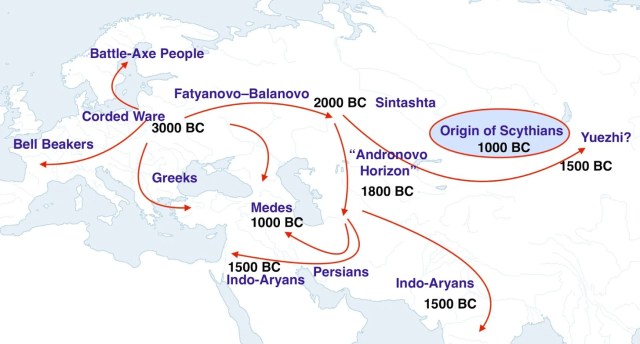Estimating population split times and migration rates from historical effective population sizes:
The estimation of effective population sizes (Ne) through time is of fundamental interest in population genetics, but the interpretation of Ne as the effective number of breeding individuals in the population is challenged by the effect of population structure. In fact, variation in Ne reported in many studies may be a consequence of changes in migration rates between populations rather than changes in actual population size. We address this long-standing problem here by constructing joint models of population size changes, migration, and divergence that can adjust temporal estimates of Ne and estimate the actual Ne of a local deme connected to another population through migration. We also develop a method for estimating divergence times and migration rates taking into account complex scenarios of changing population sizes. We apply the method to previously published data from humans, and show that, when taking migration and changes in Ne into account, the estimated divergence between the San and Dinka populations is approximately 108 kya, and not 255 kya as reported in a previous study. Using simulations, we demonstrate that the previously reported and surprisingly old estimates of divergence between San and Dinka is in fact caused by a quantifiable estimation bias due to changes in Ne through time.
If you read this blog you know I’ve alluded to really deep structure in Africa for a while. Some work using ancient Khoisan samples from South Africa puts the divergence between this population and other moderns as far back as 300,000 years ago. Privately a lot of geneticists were skeptical of this, but the published record is what it is. But there were many simplifying assumptions in these models. You can see this in Ne calculations on admixed (recently) populations as if they weren’t admixed but ancient groups. If you have an admixed population with higher genetic diversity you’re going to estimate a larger effective population…but really it’s just the pooled population of two distinct ancestral populations (or more than two, depending).
This preprint, along with A weakly structured stem for human origins in Africa, is pushing the divergence times within Africa closer to 100-125,000 years ago, as opposed to 200,000 years ago. They do make an estimate for Eurasians that seems to be corroborated by archaeology and ancient DNA:
For Han-French divergence, the model with the highest composite likelihood was one with a split time of 1505 generations (i.e. 43,645 years ago assuming 29 years per generation) and a mostly unidirectional migration rate of 2.92 from Han to French (Table 1). We also replicate the results from Sj¨odin et al. [2021], in which the TT method infers nonsensical negative split times between Han and French. The unidirectional migration inferred from Han to French is in line with current models of the peopling of Europe through waves of farmers coming from central Eurasia [Haak et al., 2015].
The 43,645 years ago estimate seems broadly correct. Ancient DNA and archaeology I think point to a period definitely before 40,000 years ago, but admixture with Neanderthals and the spread of modern human technologies means it is unlikely to be very much before 50,000 years ago (i.e., not 60,000 years ago). The “Han” to “French” migration is strange, but there is suggestive evidence deep in supplements of East Asian migration into late Pleistocene/early Holocene Europe into Mesolithic foragers. This might be common Ancestral North Eurasian ancestry, or something different. I’m not sure that this model totally checks out and we know what’s going on. Probably one reason it remains in the supplements of these papers.
They’re getting estimates between Sardinians and Africans a bit before 100,000 years ago…though they admit that it’s probably inflated by archaic (Neanderthal admixture). That value seems about right and indicates a long period of incubation of the ancestrally non-African populations within the context of African/perhaps West Asian population structure.
For more complexity/detail, see The genomic origins of the world’s first farmers, which purports to better model Ne variations to get better divergence times within Europe between various forager and farmer lineages. This group has not used “Basal Eurasians” in their human genetics papers the last few times. They don’t believe it’s needed.

 For about two decades after the Presidency of Andrew Jackson, the South dominated American politics. True, there were Northerners like Martin van Buren who became President, but they headed a Southern-dominated coalition. By the 1850s this alignment was not stable because the North was developing industrially and outpacing the population of the South. Nevertheless, it took some time for a realignment to occur, where the Mid-Atlantic regions of the North began to vote with Greater New England as a unit, and so would serve as the basis for Republican domination for decades until FDR broke the old parties.
For about two decades after the Presidency of Andrew Jackson, the South dominated American politics. True, there were Northerners like Martin van Buren who became President, but they headed a Southern-dominated coalition. By the 1850s this alignment was not stable because the North was developing industrially and outpacing the population of the South. Nevertheless, it took some time for a realignment to occur, where the Mid-Atlantic regions of the North began to vote with Greater New England as a unit, and so would serve as the basis for Republican domination for decades until FDR broke the old parties.






